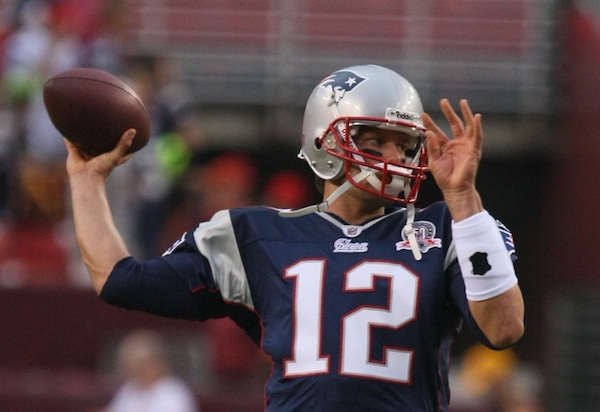In my daily podcasts where I give a forecast of the next day’s sports happenings, I always start out with the refrain, “Sports is no fun if you don’t know what’s going on!” That might never have been more true than last night at the end of the Super Bowl. A lot of dramatic things happened very quickly at the end of the game and if you weren’t well versed in football’s rules, tactics, and language, it was probably difficult to understand what was happening. Lord knows, the football fans in the room were too busy screaming and hollering to explain it rationally to you. This morning I ran through the biggest play of the game, the interception that Patriots cornerback Malcolm Butler made to win the game. The truth of the matter is that the game wasn’t completely over after that play. There were still 20 seconds on the clock. This was enough time for a few confusing things, including a scuffle between players that almost turned into a brawl, and an important penalty. Here’s what happened after the interception and why.
After Malcolm Butler’s interception, there were 20 seconds left and the Patriots had possession of the ball. With that little time, and with the Seahawks only having one timeout, the rest of the game would normally be a formality. There’s a funny little end-game trick about the NFL. It goes back to the rules we talked about in this morning’s post that dictate when the clock runs and when it stops at the end of a play. The clock keeps running if a player is tackled within the field. Because of a loophole in the NFL rule book, a quarterback can simulate being tackled in this manner by simply kneeling with the football. I wrote a whole post about how the kneeling thing works if you want more details. By kneeling with the ball, a team can run up to 40 seconds off the clock on a single play. With only one timeout, Seattle could only stop the clock once — therefore the Patriots needed to kneel twice to win the game.
The problem for the Patriots was where they had the ball. They were so close to their own goal line that there wasn’t enough room to kneel without kneeling in their own end-zone. Remember that the kneel-down is a simulation of being tackled. If a player is tackled with the ball in his own end-zone, the other team has scored a safety. A safety, (covered in more detail in our post about how scoring works in football) is worth two points. Giving up two points wouldn’t have been the end of the world for the Patriots because they were up by four points, but after a safety, the Patriots would have had to kick the ball to the Seahawks. Given even as few as 15 seconds, the Seahawks could possibly have completed a pass or two and kicked a game winning field goal. No way did the Patriots want to risk that!
The Patriots had two options. They had to either call a play that moved the ball forward and then execute it without mistakenly turning the ball over to the Seahawks — a dangerous proposition — or they could try the sneaky way out. As is their M.O., the Patriots went sneaky. They lined up for the play and then just sat there while Tom Brady hollered and screamed to make the Seahawks think he was about to snap the ball and start the play. Movement on both sides of the ball before the play begins is heavily regulated. If members of the offense flinch, their team gets a false start penalty. If members of the defense come across the line of scrimmage where the ball is and touch the offense or force the offense to move in response, they have committed an encroachment penalty. The Patriots knew that Seattle’s defense was furious at the change of fortune from the interception and that they understood the only chance they had left was to tackle whoever had the ball in the end-zone. The Patriots used Seattle’s aggression against them and tricked them into taking a penalty.
The penalty moved the ball five yards up the field and with that much room, the Patriots could easily kneel the ball twice (kneel, Seahawks use their last timeout, kneel again and the clock would run out) and win the Super Bowl. The Seahawks knew that too and the Patriots knew they knew that. It’s customary in these situations for the defense to allow the kneeling to happen. It’s virtually impossible for a defender to get to the quarterback after the ball is snapped but before he can kneel. All that can reasonably happen is an injury. Whether it was because of the unique situation before the penalty where attacking the kneel-down was a reasonable thing to do or just because the Seahawks were angry, they attacked. When this happened, the Patriots got a little angry back at them, more for breaking with convention than anything else, and there was a little bit of a brawl. Once the brawl ended, the Patriots kneeled one last time and then began the celebration in earnest.
Hopefully that made some sense out of what was legitimately a confusing situation, even for football fans. Thanks for reading!

